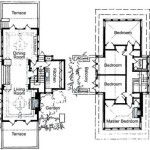How To Draw A House Floor Plan
A well-drawn floor plan is convenient for renovators, homebuyers, sellers, and contractors. With some basic instruction and a few tools, anyone can learn how to draw a house floor plan. It would be simple to design your dream house with the help of a DIY floor plan.
Drawing a house floor plan is relatively easy if you have the right tools and know the basic steps. Here is a step-by-step guide on drawing a house floor plan.
Tools you will need:
- Graph paper or blank paper
- A ruler
- A pencil (HB or 2B)
- An eraser
- Colored pencils or markers (optional)
Steps:
- Measure the house: Before beginning to draw, you need to measure each room in the house. Measure the length and width of each room. Note down the measurements on a piece of paper.
- Draw the outline of the house: Using your measurements, draw the outline of the house on the paper. Start by drawing the exterior walls. Make sure to draw the walls to scale. For example, if a room is 10 feet long and 8 feet wide, you would draw a rectangle that is 10 units long and 8 units wide on your paper.
- Add interior walls: Once you have drawn the outline of the house, you can start adding the interior walls. Draw the walls that divide the house into different rooms. Again, be sure to draw the walls to scale.
- Add doors and windows: Once you have drawn the interior walls, you can start adding the doors and windows. Draw the doors and windows in the correct location. You can use a ruler to draw straight lines for the doors and windows.
- Add furniture and fixtures: Once you have added the doors and windows, you can start adding furniture and fixtures. This is optional, but it can help you visualize how the house will look once it is finished.
- Label the rooms: Once you have added the furniture and fixtures, you can start labeling the rooms. Write the name of each room in the correct location.
- Add dimensions: Once you have labeled the rooms, you can add dimensions. Write the dimensions of each room in the correct location. This will help you and others understand the size of each room.
- Measure the house: Before beginning to draw, you need to measure each room in the house. Measure the length and width of each room. Note down the measurements on a piece of paper.
- Draw the outline of the house: Using your measurements, draw the outline of the house on the paper. Start by drawing the exterior walls. Make sure to draw the walls to scale. For example, if a room is 10 feet long and 8 feet wide, you would draw a rectangle that is 10 units long and 8 units wide on your paper.
- Add interior walls: Once you have drawn the outline of the house, you can start adding the interior walls. Draw the walls that divide the house into different rooms. Again, be sure to draw the walls to scale.
- Add doors and windows: Once you have drawn the interior walls, you can start adding the doors and windows. Draw the doors and windows in the correct location. You can use a ruler to draw straight lines for the doors and windows.
- Add furniture and fixtures: Once you have added the doors and windows, you can start adding furniture and fixtures. This is optional, but it can help you visualize how the house will look once it is finished.
- Label the rooms: Once you have added the furniture and fixtures, you can start labeling the rooms. Write the name of each room in the correct location.
- Add dimensions: Once you have labeled the rooms, you can add dimensions. Write the dimensions of each room in the correct location. This will help you and others understand the size of each room.
Once you have completed the steps above, you will have a completed house floor plan. You can use this floor plan to plan renovations, sell your house, or simply visualize how your house will look when it is finished.
Here are some additional tips for drawing a house floor plan:
- Use a scale when drawing your floor plan. This will help you ensure that the floor plan is accurate.
- Be neat and organized when drawing your floor plan. This will make it easier to read and understand.
- Use different colors or line weights to differentiate between different types of walls, doors, and windows.
- Add notes to your floor plan to explain any special features or details.
- Don't be afraid to ask for help if you need it.
With a little practice, you will be able to draw house floor plans like a pro. So get started today and see for yourself how easy it is.

Floor Plan Creator And Designer Free Easy App

How To Draw A Floor Plan The Simple 7 Step Guide For 2024

Make Your Own Blueprint How To Draw Floor Plans

House Plans How To Design Your Home Plan

Floor Plans Types Symbols Examples

Easy Home Building Floor Plan Cad Pro

Make Your Own Blueprint How To Draw Floor Plans Drawing House Sketch Plan

How To Draw House Plans Floor

A Super Simple Method For How To Draw Floor Plan Hampton Redesign

Floor Plan Wikipedia








